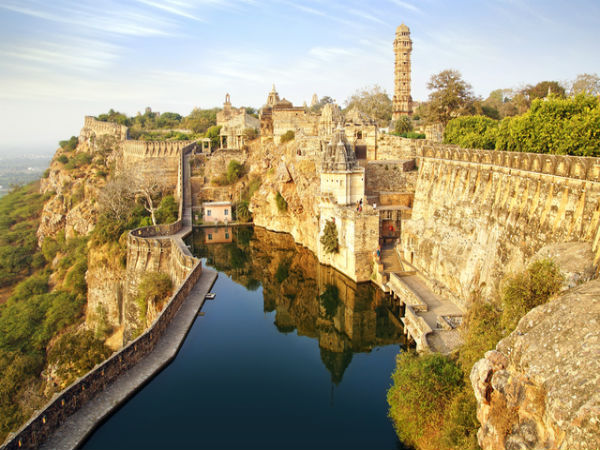A long and bumpy road takes one to the dusty town of Jhalawar in the Hadoti region of southeastern Rajasthan. At first, this remote town to a large extent looks very uninteresting, mostly a highway pit stop. But below the dust, this region is home to rare and beautiful architectural and cultural gems.
Although, the monuments here are not in the best condition, the heritage value of the structures are simply undeniable. One can find sculptures dating back to the 8th century, a hill fort which is part of a UNESCO World Heritage Site along with medieval rock cut Buddhist caves, which happen to be the only ones in the state of Rajasthan.

PC: YAMAN SAINI
The town of Jhalawar is named after the Jhalas, a clan of Rajput Chauhan warriors. The town was founded in the year 1791 and part of the Kota kingdom.
The Jhalas also were the founding fathers of the trading village of Jhalrapatan which is located on the outskirts of Jhalawar. This gated village came up atop the remains of the medieval city of Chandravati which fell in the 18th century, but a few of the 7th century temples were saved.
An English officer who visited the town in December 1821, makes a note in his travel journal mentioning about the 108 temples which it had. There are very few travellers who wish to have an encounter with the vermilion smeared deities at various corners. During the winter, the outskirts of the town is filled with orange orchards and fields, which have dancing poppies.
The Glorious Past
The sprawling Garh Palace is located at the centre of Jhalawar, which was built between 1838 and 1864. The glowing cream and terracotta palace which is underway in restoration, hence some parts of are closed to visitors.

PC: Ritukejai
Take a stroll through the endless corridors and walk through its undisturbed grounds and visit the museum which is located in the first floor of the palace.
At first, the museum does not look very interesting, but it is home to a wonderful collection of sculptures which were excavated from the lost city of Chandravati, over which the present day village of Jhalrapatan stands.
The sculptures date back to the 8th and 18th centuries, one of the most striking among them is the frightening representations of goddess Chamunda holding skulls and beheaded heads.

PC: Siddharth tiwari
One can also find glass cases which display antique artillery, illustrated leaf based manuscripts and miniature horses and elephants which are dressed for a battle.
One of the delightful exhibits is a vintage penny farthing, the shaky bicycle which was a rage in Europe during in the 1870s. The bicycle has a large front wheel and tiny back one.
A sight not be missed is the Bhawani Natya Shala, which is theatre located in the palace grounds. The theatre was built by Maharaja Bhawani Singh in 1921 AD.

The structure is built in the lines of the grand European opera houses, although it is in ruins, one can move around its vast hall. The opera hall has arched galleries along with private balconies which is a very odd sight to find in the middle of rural Rajasthan.
City Of Bells
Jhalarapatan about 10 min away from Jhalawar is an ancient village which was built in the year 1792 by Jhala Zalim Singh. To protect the village's inmates from the local dacoits who frequented the trade route, the place was enclosed within walls.
As you enter the village through a huge arched gateway, one can find temples everywhere.A British colonel who came visiting here, nicknamed the place as "City of Bells" as one can hear the ringing of bells from the large number of temples especially in the evenings.

PC: Sushmaahuja17
Some of the temples here are big, while some are small shrines, some are a single statue under a tree. Irrespective of the size, each one is attended and looked after with utmost devotion and is surrounded by lamps.
Upon a hill in the village is the Navlakha fort, which was built in the year 1860 by Jhala Prithvi Singh, who was the second ruler of the Jhalawars. The fort is one of the last forts to be constructed in Rajasthan, the fort is now in ruins.
Although there are little remains of the once beautiful fort, visitors can find the lovely floral motifs along with detailed elephant carvings on a gate which still stands.



 Click it and Unblock the Notifications
Click it and Unblock the Notifications
























